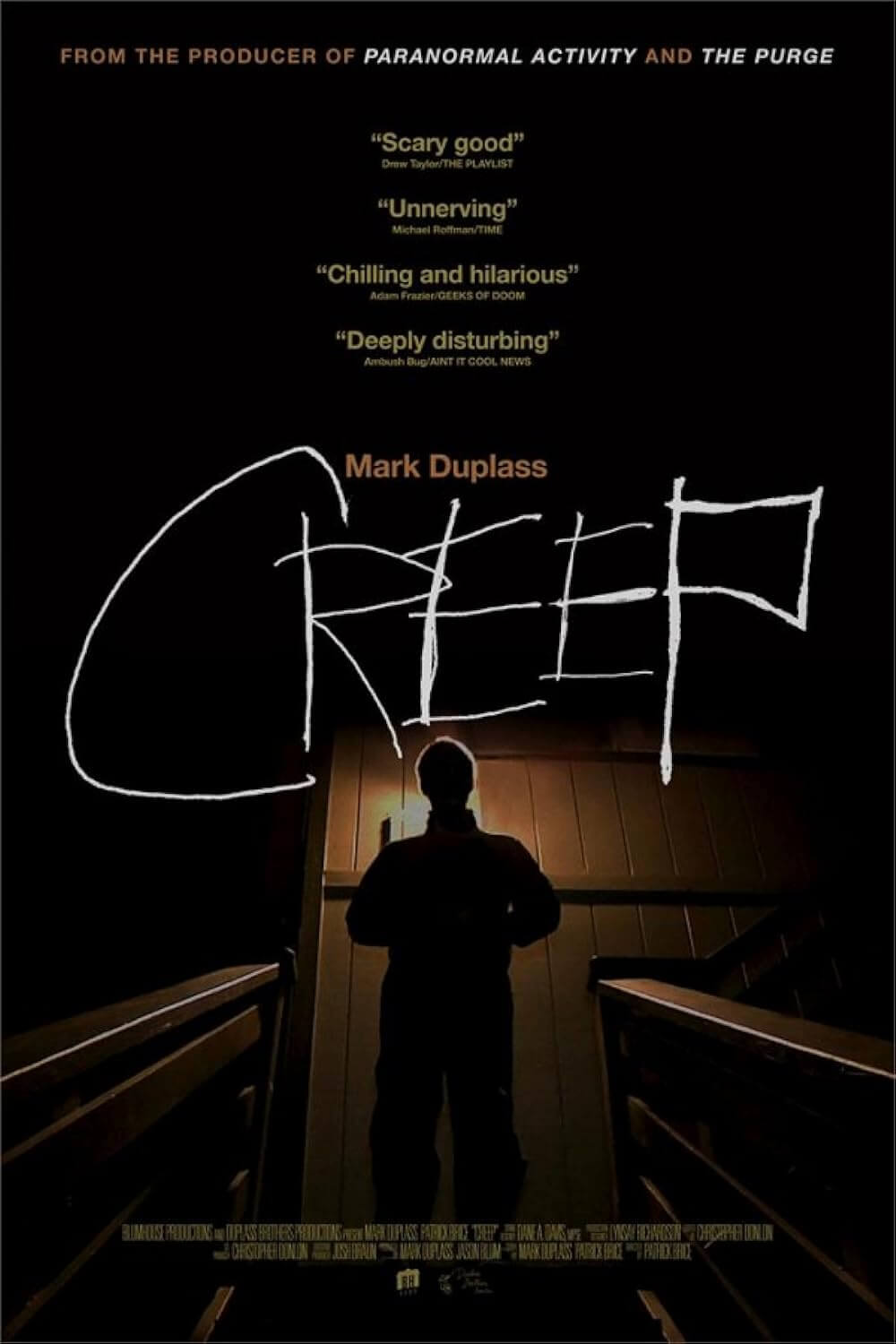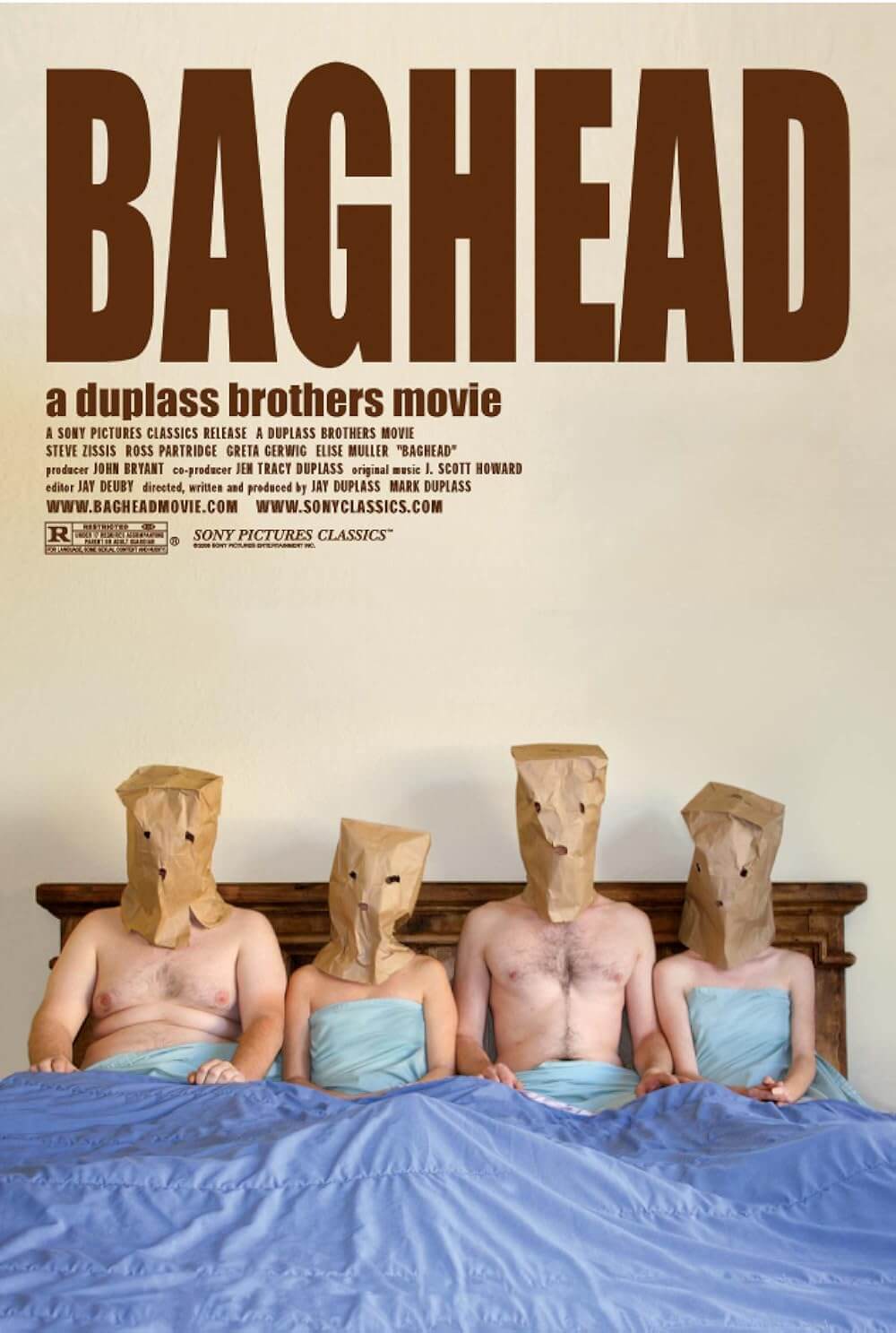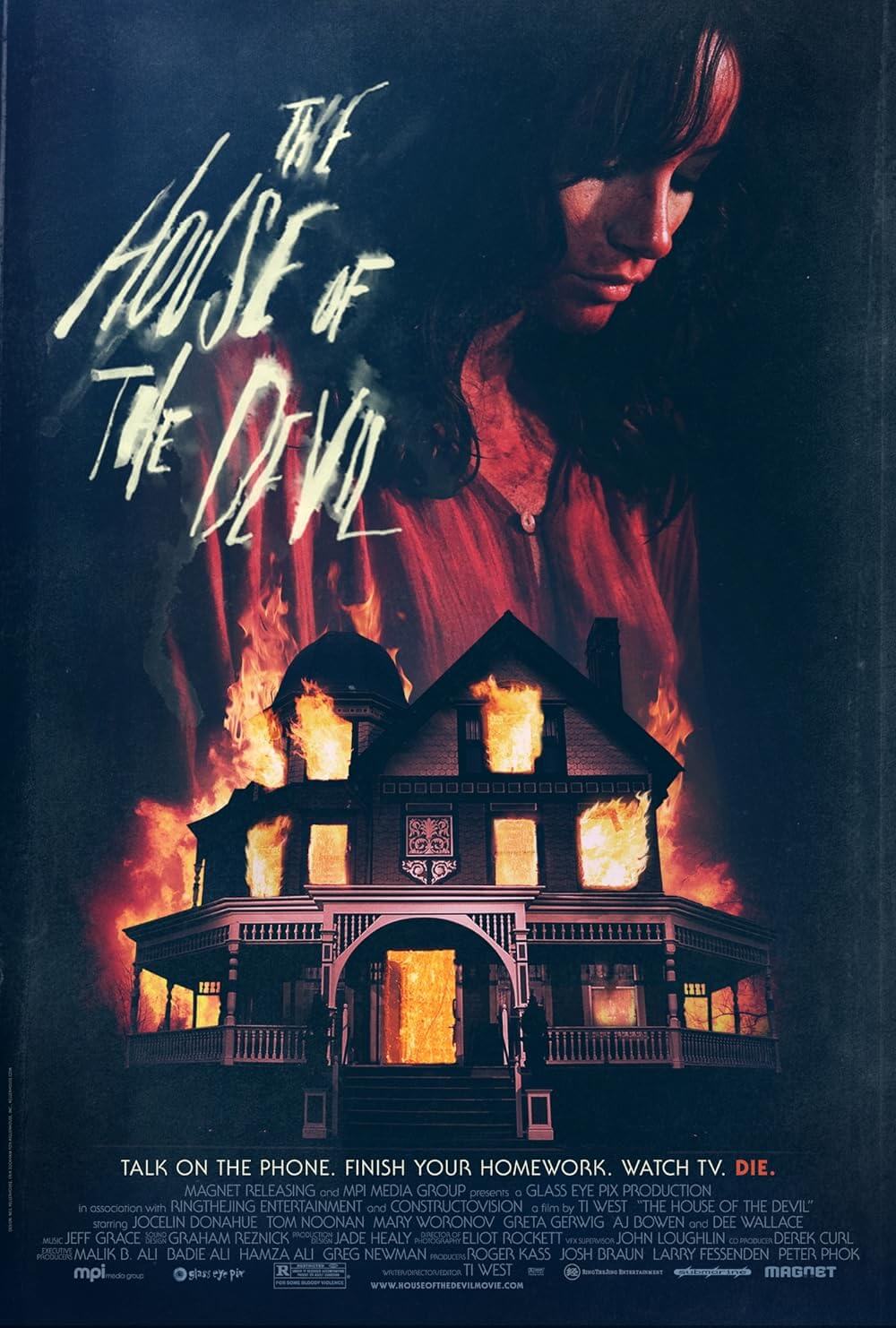Reader's Choice
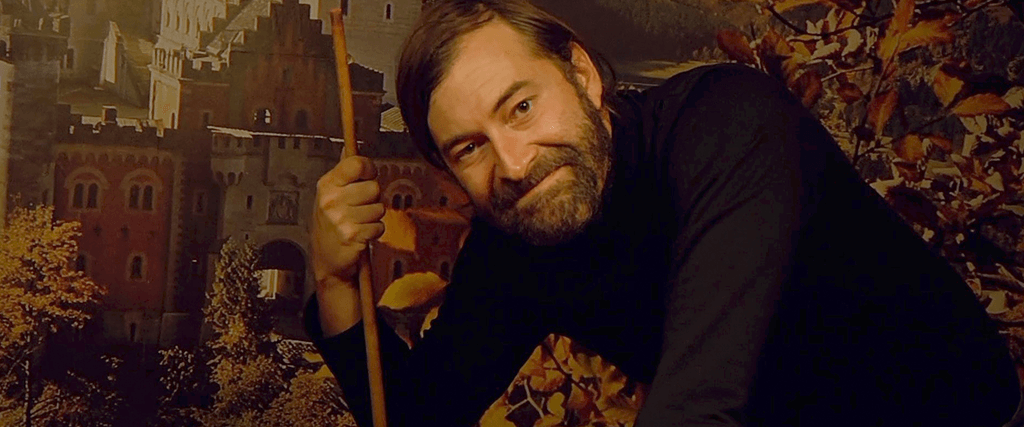
Creep 2
By Brian Eggert |
There’s something about turning 40 that makes some people want to take stock of their lives and press reset. For Angela Bassett in 1998’s How Stella Got Her Groove Back, she needed a career change and a romance with a man half her age. But everyone’s journey is different. Creep 2’s alternate title might be How a Creep Got His Groove Back. The film considers two characters, a YouTuber struggling to make her work relevant, and the self-described “most prolific” serial killer in American history. Both have run aground creatively, and at least one will be reinvigorated by their encounter. Director Patrick Brice and his co-conspirator Mark Duplass return to once again explore the many oddities about people who connect online and meet in real life. Even more than its 2014 predecessor, which had become a cult favorite in the three-year interim thanks to its presence on Netflix, the sequel considers the creepy behavior of not only the killer but the person who ignores the warning signs and proceeds to spend time with him. But in doing so, Creep 2 might also render a portrait of artists desperate to feel relevant for their audience or their creative self-respect.
For the YouTuber Sara (Desiree Akhavan, terrific), she needs to free herself of the inhibitions that have made her nine-episode, practically unwatched web series called Encounters so stale. In it, she responds to random Craigslist ads and tries to meet everyone on their terms, from engaging in spiritualist mumbo-jumbo to fulfilling one man’s request to “mommy” him with unblinking commitment. But how far does her personal motto—“We’re all a bit weirder than we give ourselves credit for”—extend? For the killer played by Mark Duplass, he has just turned 40 and has reached an impasse. He has been doing the same thing over and over, and he has the video evidence of every patterned encounter. Though he’s great at what he does, he’s going through the motions. His routine of befriending or hiring a random stranger, only to intentionally weird them out, at which point he becomes a stalker and kills his victim, has grown stale. What’s a murderer—his preferred nomenclature—to do? The answer results in an innovative sequel that, like its characters, is not content to merely do what came before; instead, it rethinks the formula out of desperate self-preservation.
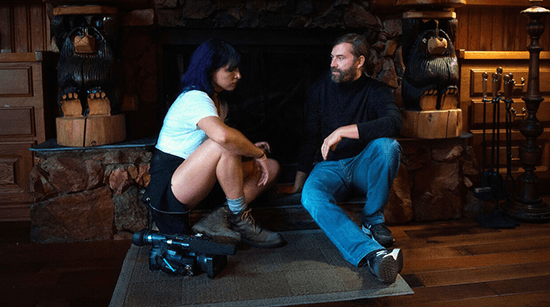 The sequel begins with nice guy Dave (Karan Soni) opening up a package from his stalker. Inside, he finds a stuffed wolf cub toy. As viewers, we can see what Dave does not, that a camera has been placed in the wolf. So we see from the inside when Dave opens the box and has a “what the fuck” moment alone, before his friend, Aaron, arrives for a casual hang. Duplass’ character, now going by the victim’s name from Creep, sneaks wry smiles at the camera as the two men share a beer. Then Aaron confesses that he sent the wolf. “I’m worried about us,” he tells Dave, whose body language goes rigid, terrified as Aaron admits to being his stalker. “If we aren’t headed for greatness, then maybe we end it right here… tonight.” But even after slicing Dave’s throat in a quick motion, Aaron does not feel reinvigorated as he usually does. He feels empty. It’s not until some time later that we catch up with Aaron, now bearded, his hair long, having hired a videographer to record his serial killer routine. Is this a genuine confession, or just a different angle to claim another victim?
The sequel begins with nice guy Dave (Karan Soni) opening up a package from his stalker. Inside, he finds a stuffed wolf cub toy. As viewers, we can see what Dave does not, that a camera has been placed in the wolf. So we see from the inside when Dave opens the box and has a “what the fuck” moment alone, before his friend, Aaron, arrives for a casual hang. Duplass’ character, now going by the victim’s name from Creep, sneaks wry smiles at the camera as the two men share a beer. Then Aaron confesses that he sent the wolf. “I’m worried about us,” he tells Dave, whose body language goes rigid, terrified as Aaron admits to being his stalker. “If we aren’t headed for greatness, then maybe we end it right here… tonight.” But even after slicing Dave’s throat in a quick motion, Aaron does not feel reinvigorated as he usually does. He feels empty. It’s not until some time later that we catch up with Aaron, now bearded, his hair long, having hired a videographer to record his serial killer routine. Is this a genuine confession, or just a different angle to claim another victim?
Creep 2 doesn’t repeat the original’s formula; though, the prologue with Dave establishes Aaron’s usual routine as the expected outcome. Sara, hardened by her experience with all manner of oddballs on her YouTube show, tests Aaron’s scheme. When she responds to his ad for $1,000 for a single day of videographer work (“Fans of Interview with the Vampire a must”), she seems unfazed by his customary games: Aaron offers Sara a smoothie he jokes is poisoned, and she drinks it without reservation. He confesses that he’s a serial killer, with 39 victims claimed, and that he wants her to make a documentary about his process; he even shows her a clip of his kill from Creep. But she doesn’t flinch. And to get over the “gender wall” between them, he proposes they strip in front of each other, yet she doesn’t hesitate to disrobe. Sara isn’t the sort of person who will jolt in terror when Aaron pops out from behind a corner, nor will she give Aaron what he obviously wants—a reaction. Only when she has a moment with herself and the camera does she acknowledge his “red flags,” but she resolves to continue anyway, unconvinced Aaron is what he claims.
Creep 2 finds its killer facing the same challenge as the filmmakers. Brice and Duplass set out to make a sequel that, like the first installment, does more with less, and does something different. With the budget practically nonexistent, and an on-set crew limited to the actors and a sound engineer, Creep 2 continues the hand-crafted appeal of the found footage aesthetic. But Brice and Duplass labored over the sequel concept for years to ensure the story was right before they started filming, not content to merely repeat themselves. Duplass claimed Creep 2, which debuted in 2017 on Netflix, would mark the second entry in a proposed trilogy. But as of this writing, the third installment has failed to materialize or begin filming. Coming up with an idea good enough for a sequel was difficult enough, and despite widespread critical praise and a similar cult appreciation by viewers, Duplass told IndieWire, “We had to almost kill ourselves to make that movie as good as it was. I appreciate how many people liked it but I do feel like it wasn’t as good as it could have been, if I’m being perfectly honest.”
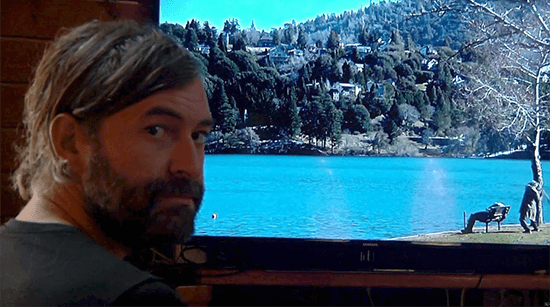 Regardless of Duplass’ dissatisfaction with the result, the production’s desire for self-reinvention folds into the story nicely, with Sara challenging Aaron to think outside of his usual limitations, while she proves self-destructive in her willingness to play Aaron’s games. Watching Sara keep Aaron on his toes reorganizes the dynamic between killer and victim in subtle ways, turning the model established in the first inside-out. As an obsessive killer with a fixed modus operandi, he likes things orderly. Yet, in one example, he shares his admiration for filmmaker Francis Ford Coppola’s push to keep making movies despite his artistic decline. So when Aaron’s plan to sit in a river’s cleansing waters falls through, Sara shares the motto, “What would Francis Ford Coppola do?” But those words can’t shake him out of a funk when a stagey monologue for his documentary doesn’t go as planned. He loses his temper and shuts down, requiring Sara to provoke him, she says, “to get the material I need.”
Regardless of Duplass’ dissatisfaction with the result, the production’s desire for self-reinvention folds into the story nicely, with Sara challenging Aaron to think outside of his usual limitations, while she proves self-destructive in her willingness to play Aaron’s games. Watching Sara keep Aaron on his toes reorganizes the dynamic between killer and victim in subtle ways, turning the model established in the first inside-out. As an obsessive killer with a fixed modus operandi, he likes things orderly. Yet, in one example, he shares his admiration for filmmaker Francis Ford Coppola’s push to keep making movies despite his artistic decline. So when Aaron’s plan to sit in a river’s cleansing waters falls through, Sara shares the motto, “What would Francis Ford Coppola do?” But those words can’t shake him out of a funk when a stagey monologue for his documentary doesn’t go as planned. He loses his temper and shuts down, requiring Sara to provoke him, she says, “to get the material I need.”
It’s the continued prodding that incites Duplass’ character to snap out of his apathy, including a hilarious sequence when Aaron tries to sneak up on Sara in the shower à la Psycho (1960), but she leaps out to scare him, her face distorted by a tape mask. It’s almost a shame that Desiree Akhavan’s career as a director and LGBTQ advocate keeps her behind the camera; her screen presence here is curious and open, disturbingly so, hinting at Sara’s similar brand of dysfunction to that of Duplass’ character—it’s an excellent performance. Duplass, once again, is marvelously strange. There’s an enthralling push and pull between the characters that doesn’t feel like another version of Creep, though there are sly moments where Duplass’ eerie charm returns. When Sara notes that Aaron promised he wouldn’t kill her, but only for the next 24 hours, he smiles and playfully asks, “Now why would you bring that up?” Later, he finally shakes Sara’s resolve when he concocts a morbid scenario for Sara to help him commit suicide, and later still, join him in a double suicide modeled after Romeo and Juliet. But it’s worth questioning whether his intentions are earnest, or if he just found a new, more elaborate manner of fucking with his prey.
Creep 2 could be accused of repeating the formula of the original, albeit in a roundabout way. However, that the sequel doesn’t end with Duplass’ character adding his fortieth victim to the tally suggests the filmmakers have more on their minds than producing a carbon copy. The story is an apt metaphor for what Duplass and the production have sought to accomplish with both Creep movies, by rethinking the usual creative outcomes. Arguably, Creep 2 might be the last entry in the mumblegore sub-subgenre, even though its association with Blumhouse and Netflix tests that label. The filmmakers have resolved to keep their budgets small and maintain creative integrity in their process, regardless of the infrastructure supporting them, whereas other independent horror movies rely on the mini-industry built around the genre to boost their production values and distribution model. But Creep 2 still feels like the handcrafted work of a few people, working at two or three locations, with a budget no more than a few thousand dollars at most. It feels like they’re experimenting, which is a rare sensation for movie-watchers to experience. Duplass’ disappointment aside, the sequel provokes scares aplenty through its handheld camera and two-hander setup, delivering a satisfying installment in a minor franchise, and a thought-provoking approach to a sequel.
(Note: This review was originally posted to Patreon on October 25, 2023.)
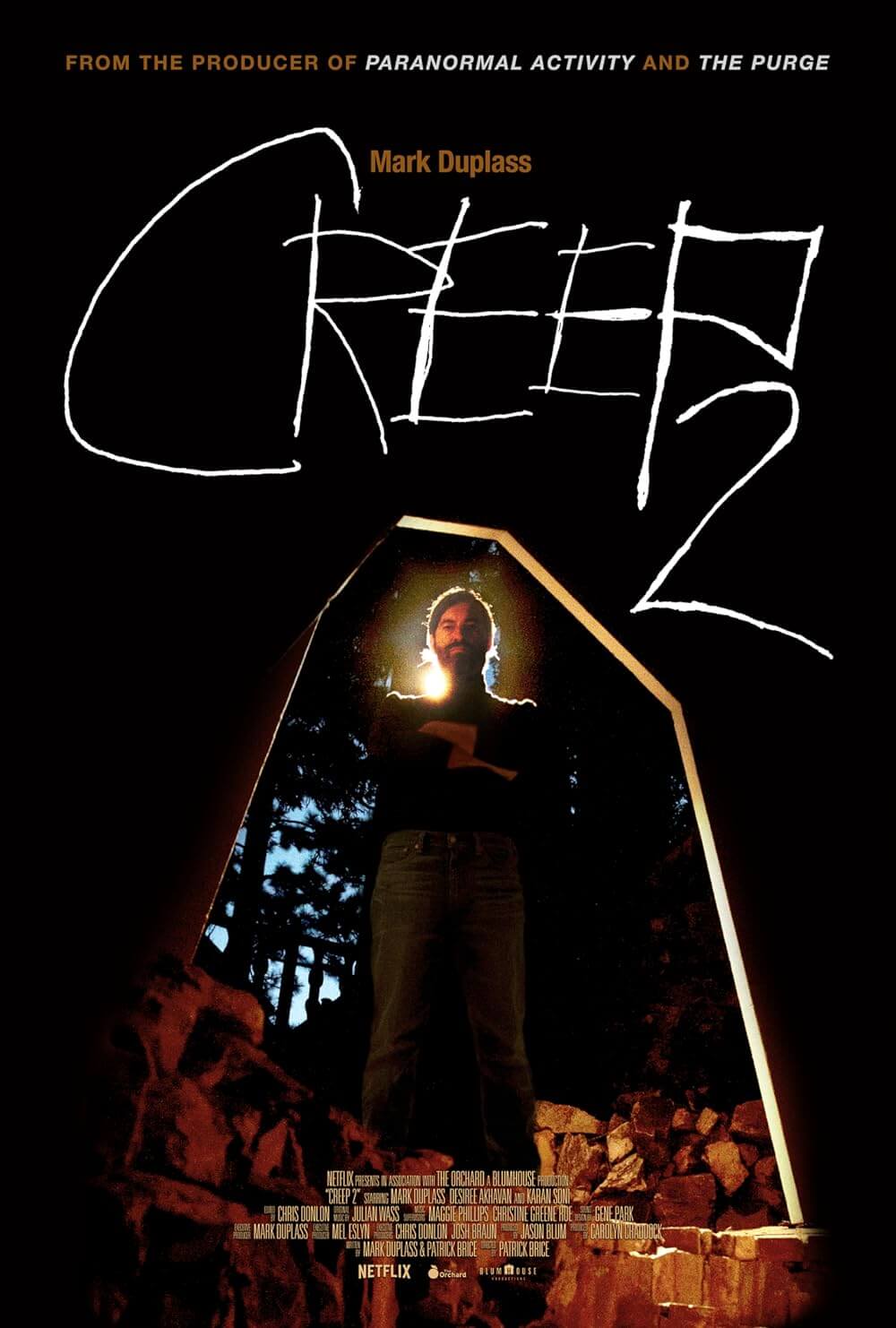
Consider Supporting Deep Focus Review
I hope you’re enjoying the independent film criticism on Deep Focus Review. Whether you’re a regular reader or just occasionally stop by, please consider supporting Deep Focus Review on Patreon or making a donation. Since 2007, my critical analysis and in-depth reviews have been free from outside influence. Becoming a Patron gives you access to exclusive reviews and essays before anyone else, and you’ll also be a member of a vibrant community of movie lovers. Plus, your contributions help me maintain the site, access research materials, and ensure Deep Focus Review keeps going strong.
If you enjoy my work, please consider joining me on Patreon or showing your support in other ways.
Thank you for your readership!
Brian Eggert | Critic, Founder
Deep Focus Review


